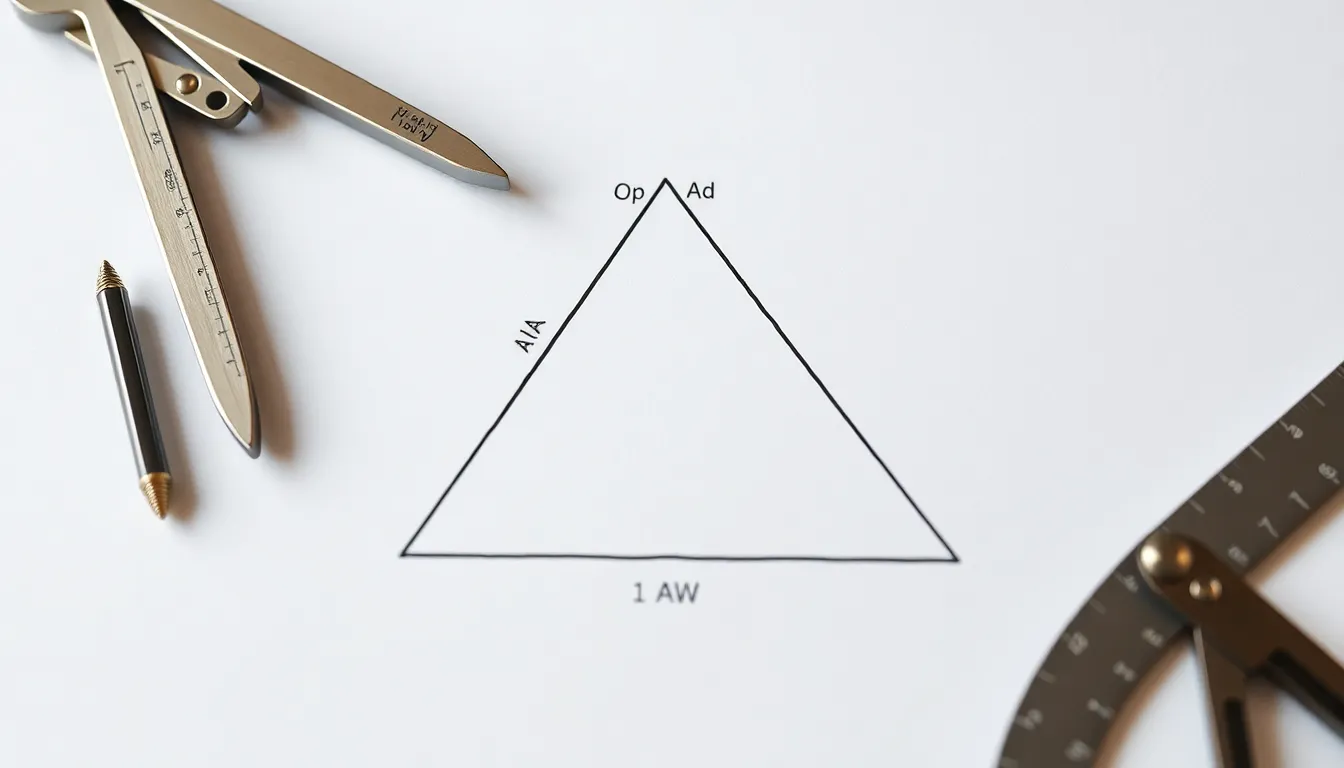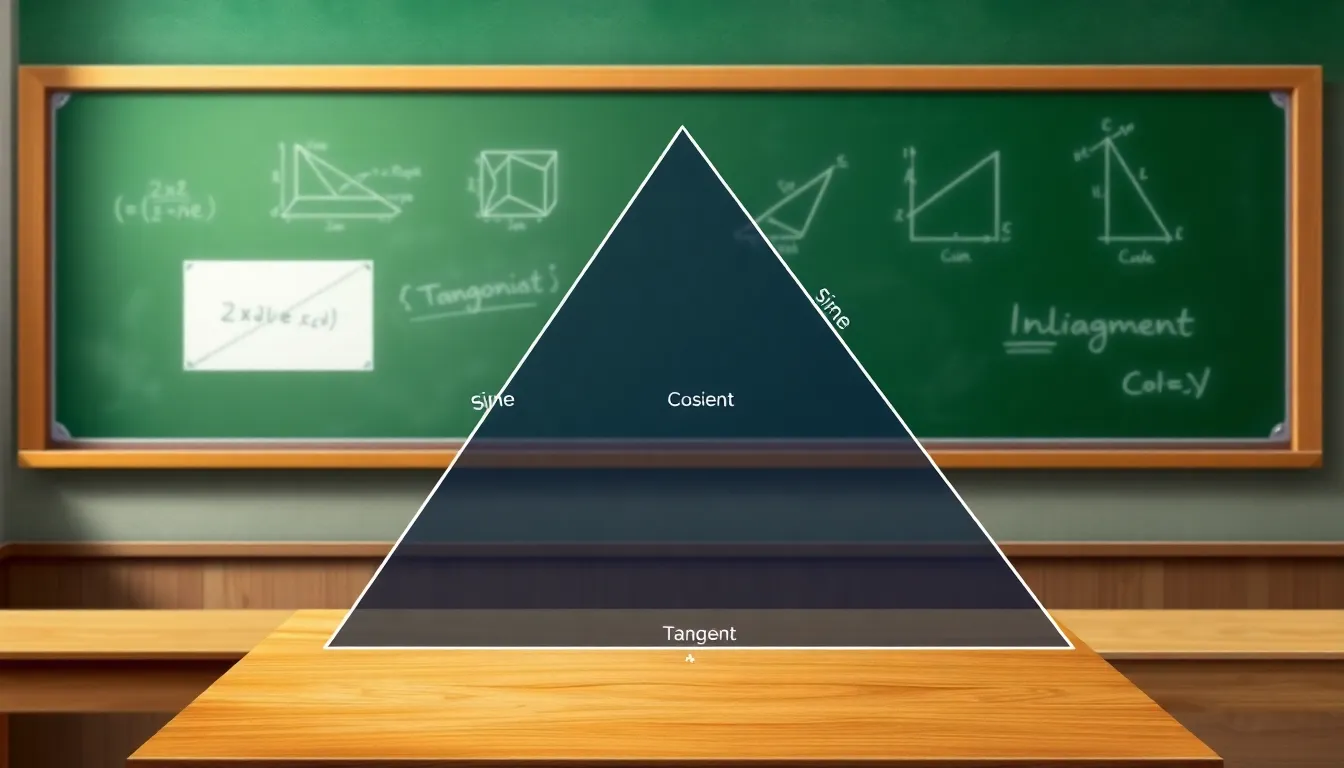Table of Contents
ToggleUnderstanding trigonometry can seem daunting, but mastering the basics opens up a world of possibilities. One of the foundational concepts in trigonometry is SOH CAH TOA, a mnemonic that helps students remember the relationships between the angles and sides of right triangles. This simple yet powerful tool is essential for solving various problems in mathematics and applied sciences.
By breaking down SOH CAH TOA, learners can easily grasp how to calculate sine, cosine, and tangent. Whether it’s for a math class, engineering projects, or everyday applications, knowing how to use this technique can boost confidence and problem-solving skills. In this guide, readers will discover practical steps to effectively apply SOH CAH TOA and enhance their understanding of trigonometric functions.
Understanding Soh Cah Toa
Soh Cah Toa serves as a foundational concept in trigonometry, simplifying the relationships between angles and sides in right triangles. By mastering this mnemonic, individuals can effectively tackle various mathematical challenges.
What is Soh Cah Toa?
Soh Cah Toa embodies three essential trigonometric ratios. Each component relates to a specific angle in a right triangle:
- Soh: Represents the sine function, defined as the ratio of the opposite side to the hypotenuse.
- Cah: Refers to the cosine function, which is the ratio of the adjacent side to the hypotenuse.
- Toa: Stands for the tangent function, calculated as the ratio of the opposite side to the adjacent side.
These relationships enable users to compute unknown angles or side lengths in right triangles.
Importance in Trigonometry
Soh Cah Toa plays a vital role in trigonometry for several reasons:
- Foundation for Advanced Topics: It serves as a building block for more complex concepts like the unit circle and trigonometric identities.
- Problem Solving: It equips students with tools to solve real-world problems, such as determining heights, distances, and angles in fields like engineering and architecture.
- Enhanced Understanding: It fosters comprehension of angle properties and relationships, contributing to increased mathematical proficiency.
Mastering Soh Cah Toa enhances overall problem-solving skills and boosts confidence in tackling trigonometric challenges.
The Components of Soh Cah Toa


Understanding the three components of SOH CAH TOA lays the foundation for mastering trigonometric concepts. These components involve the relationships between the angles and sides of right triangles, which are crucial for solving various mathematical problems.
Sine: Opposite Over Hypotenuse
Sine defines the ratio of the length of the opposite side to the hypotenuse in a right triangle. This relationship is expressed mathematically as:
[ text{sine}(theta) = frac{text{opposite}}{text{hypotenuse}} ]
For example, if a right triangle has an angle of 30 degrees and the hypotenuse measures 10 units, the length of the opposite side calculates to 5 units because:
[ text{sine}(30^circ) = frac{5}{10} ]
Cosine: Adjacent Over Hypotenuse
Cosine represents the ratio of the adjacent side to the hypotenuse. This relationship is represented by the formula:
[ text{cosine}(theta) = frac{text{adjacent}}{text{hypotenuse}} ]
For instance, if the angle is 60 degrees and the hypotenuse is 10 units, the length of the adjacent side equals 5 units as calculated by:
[ text{cosine}(60^circ) = frac{5}{10} ]
Tangent: Opposite Over Adjacent
Tangent defines the ratio of the opposite side to the adjacent side:
[ text{tangent}(theta) = frac{text{opposite}}{text{adjacent}} ]
For example, if the angle measures 45 degrees and the opposite side is 7 units, the adjacent side calculates to 7 units as well since:
[ text{tangent}(45^circ) = frac{7}{7} ]
These three trigonometric ratios form the basis for solving problems related to right triangles and reinforce the principles of SOH CAH TOA.
Step-by-Step Guide on How to Do Soh Cah Toa
Understanding how to apply the SOH CAH TOA mnemonic requires systematic steps. This guide provides a clear path to using trigonometric ratios effectively.
Identifying the Triangle
Identifying the triangle involves recognizing a right triangle, which features one 90-degree angle. Look for the angle of interest within the triangle. This angle will be used to determine which sides relate to the sine, cosine, and tangent ratios. Ensure the triangle is accurately represented and clearly labeled for precise calculations.
Labeling the Sides
Labeling the sides of the triangle is essential for proper application of the ratios. Assign the sides as follows:
- Hypotenuse: The longest side, opposite the right angle.
- Opposite: The side opposite the angle of interest.
- Adjacent: The side adjacent to the angle of interest.
Visual aids, such as diagrams, can enhance understanding and accuracy in this step.
Applying the Formulas
Applying the formulas involves utilizing the correct trigonometric ratios based on the angle and relevant sides:
- Sine (SOH): Use sine for the ratio of the opposite side to the hypotenuse.
- Cosine (CAH): Use cosine for the ratio of the adjacent side to the hypotenuse.
- Tangent (TOA): Use tangent for the ratio of the opposite side to the adjacent side.
Substituting the values from the labeled triangle into these formulas provides the necessary calculations to solve for unknown side lengths or angles.
Common Mistakes to Avoid
Understanding how to apply SOH CAH TOA involves recognizing common mistakes that can lead to incorrect calculations. Avoiding these pitfalls enhances accuracy in solving trigonometric problems.
Mislabeling Sides
Mislabeling the sides of a triangle often leads to incorrect answers. When working with right triangles:
- The hypotenuse always faces the right angle and is the longest side.
- The opposite side is directly across from the angle of interest.
- The adjacent side lies next to the angle of interest and is neither the hypotenuse nor the opposite side.
Misidentifying these sides compromises the application of trigonometric ratios. Verify the labels before proceeding with calculations to ensure accuracy.
Confusing Sine and Cosine
Confusion between sine and cosine represents a frequent error in trigonometric problems. Remember the definitions clearly:
- Sine is defined as the ratio of the opposite side to the hypotenuse (SOH).
- Cosine is defined as the ratio of the adjacent side to the hypotenuse (CAH).
Mixing these two ratios alters the calculations, producing incorrect results. When applying SOH CAH TOA, ensure the correct ratio corresponds to the right side and angle. Double-checking these definitions can prevent unnecessary mistakes.
Mastering SOH CAH TOA equips individuals with essential tools for tackling trigonometric problems effectively. By understanding the relationships between angles and sides in right triangles, students can build a strong foundation in trigonometry. This knowledge not only enhances problem-solving skills but also boosts confidence in applying these concepts to real-world situations.
Recognizing the common mistakes and following a structured approach can significantly improve accuracy. As students practice applying SOH CAH TOA, they’ll find themselves better prepared for more advanced mathematical challenges. Embracing this mnemonic can pave the way for success in fields like engineering and architecture, where trigonometry plays a vital role.




